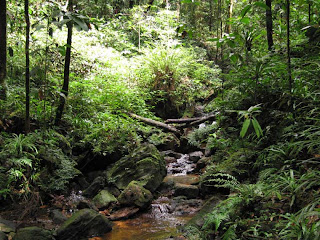THE
SRI PADA (ADAM”S PAEK)
The most famous physical feature of Ceylon is Adam's Peak,
which is situated in the Ratnapura district. It is on the edge of the central
massif but its surrounding group of mountains called the Wilderness of the
Peak, is so extensive in comparison to the bulk of the other mountain groups
that it appears to form a nucleus of its own, separate from the others. It is
2,243 meters high and, though it is the fifth highest peak in the land, its
position in relation to the topography is so dominant that it stands out above
all others.
The
mountain is most often scaled from December to May. During other months it is
hard to climb the mountain due to very heavy rain, extreme wind, and thick
mist.
For
Buddhists, the footprint mark is the left foot of the Buddha, left behind when
Buddha visited Sri Lanka, as a symbol for worship at the invitation of Buddhist
God Saman.
A
shrine to Saman, a Buddhist "deity" (People who have spent spiritual
life during their life on earth and done pacificism service to regions are deified
by Sri Lankan Buddhists) charged with protecting the mountain top, can be found
near the footprint.
Sri Pada is the term, derived from Sanskrit,
used by the Sinhalese people in a religious context. This name is also
understood in Pāli, and may be
translated roughly as "the sacred foot". It refers to the
footprint-shaped mark at the summit, which is believed by Buddhists to be that
of the Buddha.
Access to the mountain is possible by 6 trails
(Ratnapura-Palabaddala, Hatton-Nallathanni, Kuruwita-Erathna, Murraywatte,
Mookuwatte & Malimboda). Out of these the Nallathanni & Palabaddala
routes are the most popular. Kuruwita-Erathna road is somewhat popular as well.
The other 3 roads are almost obscure. It joins the Palabaddala road midway through
the ascent. Buses connect the final nodes of Nallanthanni to Hatton,
Palabaddala to Ratnapura & Erathna to Kuruwita. Thereafter it's a difficult
journey through the forest on foot. Most of the pilgrims use Hatton route as
the journey on foot can be reduced by more than five kilometers even though the
slope of this route is much greater than other routes.
 | |
| The Foot of the Lord Buddha |


































